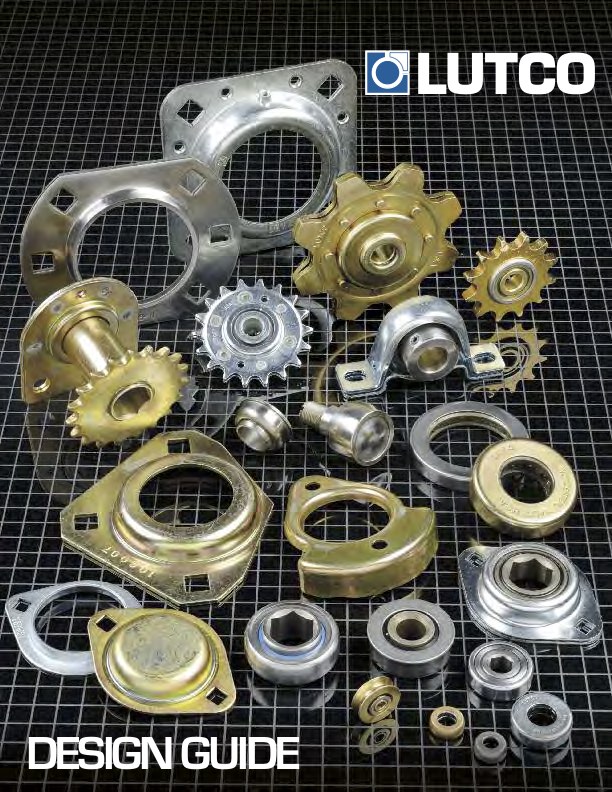Lutco’s vast metal stamping expertise and wide range of capabilities have always served as a competitive advantage. While there are plenty of vendors that offer metal stamping, many stamped components require secondary services that most stamping shops simply can’t provide, forcing OEMs to extend and complicate their supply chain. But, following a year of economic uncertainty and supply chain disruption, many are seeking the stability of an experienced component manufacturer offering an all-in-one solution with expertise in specialty metal stamping as well as the capabilities to execute additional metalforming or assembly processes. So when this global abrasive solutions provider needed to find a new supplier to help them produce a critical, hard-to-manufacture component, they knew that Lutco was a perfect choice.
The Unique Challenges of Stamping and Forming with Exotic Alloys
From the initial assessment, we were able to identify a number of key challenges and pain points associated with producing this particular component. The first was the material: the part needed to be made from AISI 6150 steel— an especially hard and brittle alloy with high Carbon and Vanadium content that requires annealing between each operation in the stamping process to prevent microcracking.
Our work with this manufacturer began by forming a good relationship with the customer’s engineers— a critical part of any new project that we take on. We took them on a tour of Lutco’s facilities and discussed what operations would be required and the variety of equipment involved. The customer invited our engineers to their facilities to better understand how the component would function on their manufacturing line.
During our first piece inspections, it came to light that the tools and components produced did not match the documentation. This sometimes occurs with legacy components developed under less stringent documentation processes than today’s standards. Since the customer’s previous supplier was a small stamping house, it is reasonable to assume that they simply did not have the standard engineering procedures or design controls to establish a thorough record of documentation.
Engineering The Ideal Process for Precise Metal Stamping and Production
When it came time to begin producing the components, we relied on a carefully developed process that included blanking, numerous drawing operations, piercing, annealing between forming operations, heat-treating, and tumbling. While not all component shops can offer this range of processes, we could carry out most of these operations on-site thanks to the depth of capabilities provided by Lutco’s state-of-the-art machinery and facilities. For this particular component, though, the heat treating operation required a third-party facility specializing in heat-treating due to the high carbon content in AISI 6150 steel. Despite Lutco’s extensive heat-treating capabilities, this exotic alloy needed temperatures exceeding what our in-house annealing could offer, and so a local heat-treat facility was contracted to execute annealing cycles between manufacturing operations. Lutco maintains relationships with a network of proven suppliers for the rare occasions an operation cannot be carried out on-site, keeping both costs and transportation time at a minimum.
Producing the component that this customer requested required us to work within thousandths of an inch precision. Tight tolerances and stringent concentricity/roundness requirements can present challenges during metal stamping. But with decades of metal stamping experience to our credit, Lutco’s engineers were able to quickly fine-tune our operation and begin producing the component to meet the customer’s standards. “This really highlights where metal forming and metal cutting differ— especially with exotic alloys, the material flow is challenging to control; however, Lutco has the proper computer modeling and expertise to form these difficult alloys,” said Engineering Director Anthony Romero. “With other metal removal processes, you can just take a little more off; with forming, we have to take the whole process into account and how each step affects the material and how it will flow.”
Updated Documentation Aligns Legacy Parts and Prints for Stamped Metal Components
The final step of the process was to produce new prints that would replace the inaccurate documentation and meet ISO standards. Now, this component is correctly documented, making it easy for a new group of engineers to interpret in the future. In some cases, manufacturers will seek out smaller shops that may lack some engineering or documentation resources as a tradeoff for faster turnaround times or more personalized attention. This customer, however, chose Lutco due to our “best of both worlds” approach— small-business relationship-driven service with big-business capabilities, standards, and resources.
In some ways, this work had to be approached in reverse; we received tools that didn’t match the prints and were required to invert our typical process to meet the customer’s needs. This unique method, combined with complex processes and exotic materials, required a high level of metal stamping and forming expertise to produce a satisfactory result. But in the end, our engineers were able to turn the potentially production-halting problem of a lost vendor into an opportunity for developing improved processes, a higher standard of documentation, and a better overall product.







